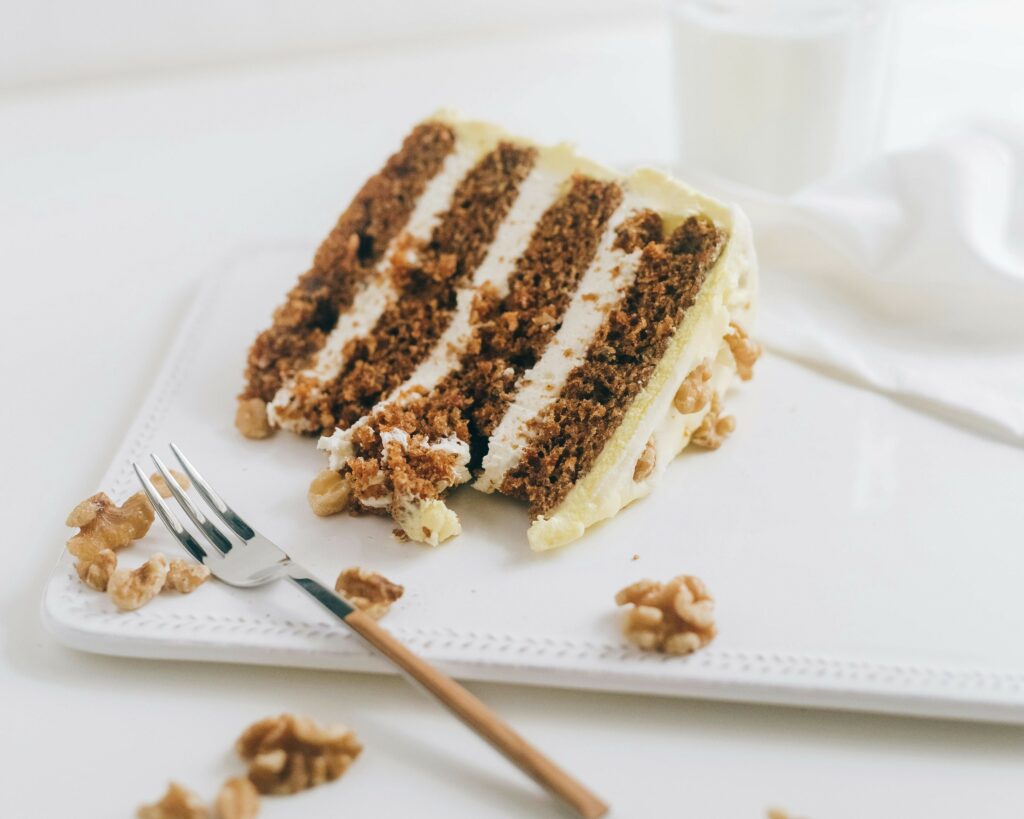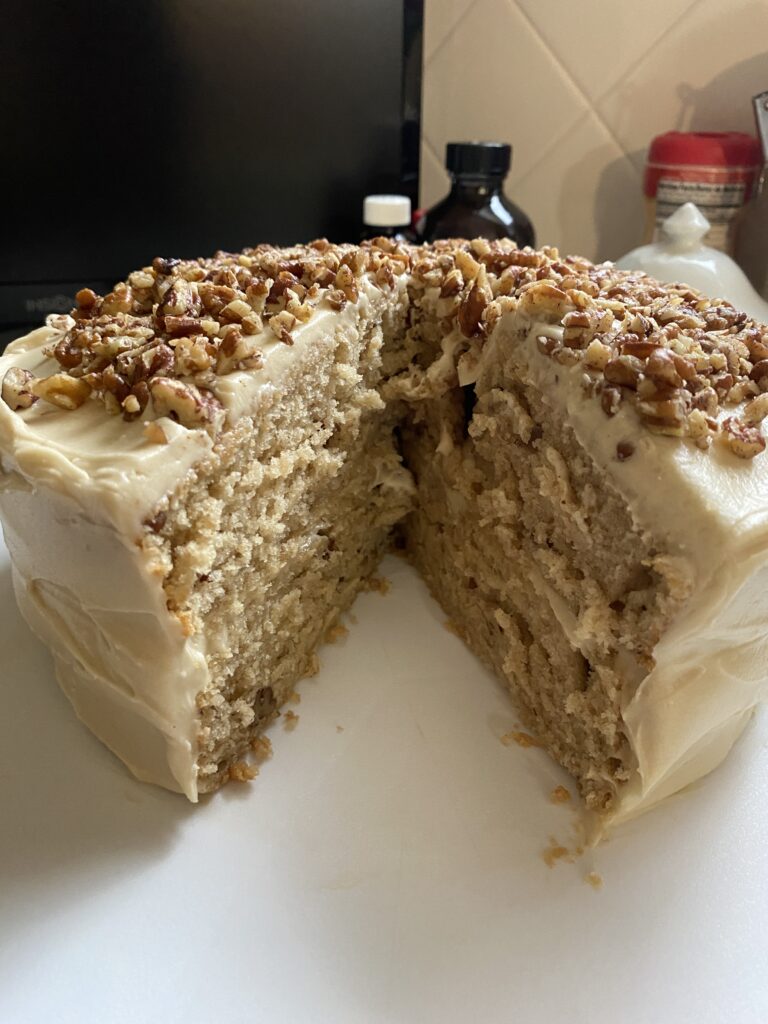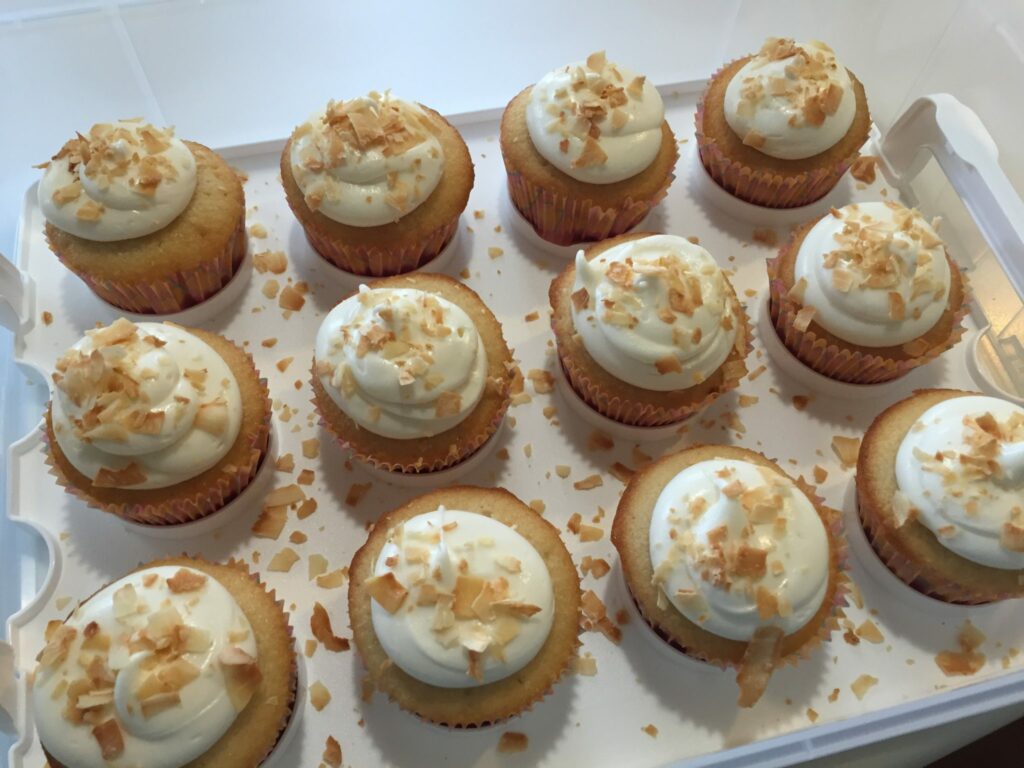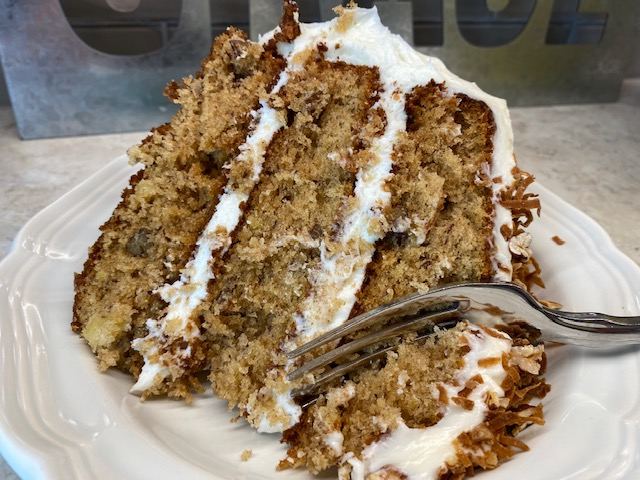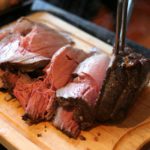I love baking with whole wheat flour. Not just because I believe it’s healthier to use the whole grain, but I really do prefer the taste. Whole wheat products have a nuttier, heftier feel to them. You won’t get “wedding cake” smoothness out of a whole wheat recipe, but then, you won’t have that cloying, gummy mouthfeel, either.
Whole wheat flour is simply flour made from the entire wheat kernel – made up of the endosperm, bran and germ:

All-purpose flour only uses the endosperm. For this reason, all-purpose flour is usually lighter in color and finer in texture. While it does make a great wedding cake, all-purpose flour is also much lower in B-vitamins (which is why they have to “enrich” the flour artificially), lower in fiber (from the bran) and lower in protein. I just don’t think it’s worth the trade, myself.
Quality Stand Mixer from Hamilton Beach
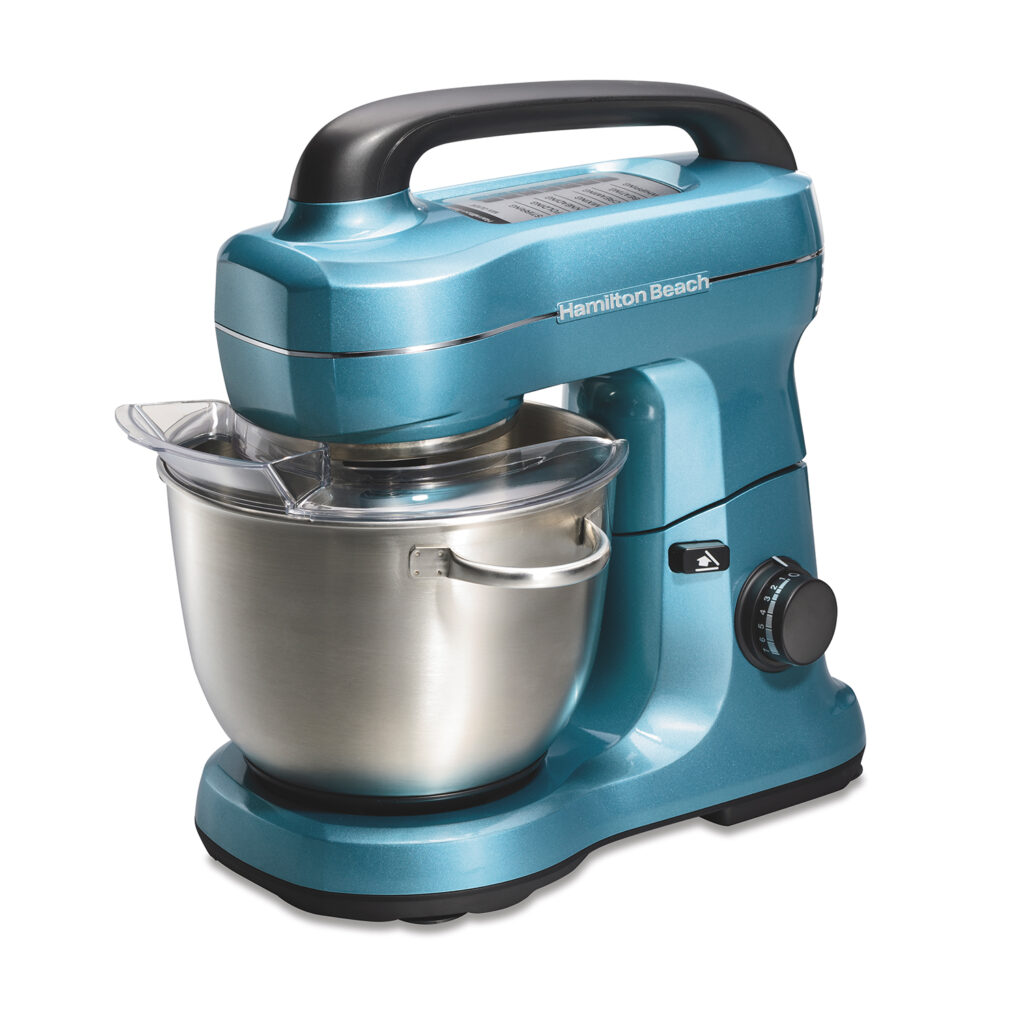
(All-purpose flour does have a longer shelf-life, which makes it much more profitable! Hmmm . . . )
You may have a recipe that calls for all-purpose flour that would make a good candidate for whole wheat. I would recommend trying it for any of these:
- Muffins
- Drop Cookies, especially chocolate chip, oatmeal or molasses
- Breads and Rolls (except flaky pastry-type rolls or croissants)
- Batter breads (banana bread, zucchini bread, date nut bread)
- Coffee Cake and Scones
- “Heftier” cakes calling for nuts, raisins, dates (carrot cake is a great choice)
- Pancakes (especially good here!)
There several things to remember when working on substituting whole wheat for all-purpose flour:
Whole Wheat Flour is Heavier – and because of this, you need to work on incorporating plenty of air into your batter. You’ll need more leavening. You will also need to bake it just a bit longer, as heat takes longer to penetrate a dense batter.
Whole Wheat Flour contains bran, which is not very soluble in water. Because of this, whole wheat flour will benefit from extra liquid and some extra time to sit and absorb as much liquid as possible.
Whole Wheat Flour does impart some taste of it’s own to the recipe. Personally, I like that, but in a more delicate recipe it may overpower the flavor you’re going for. For this reason, you may want to use whole wheat only in recipes that contain some “bigger” flavors, like chocolate, bananas, nutmeg/cinnamon spices, and molasses.

Follow these suggestions when swapping out 1:1 all-purpose for 100% whole wheat flour and you’ll enjoy a better result:
For every cup of whole wheat flour called for, add an additional 2 tsp to 1 tbsp of liquid – water, milk, juice, etc. (Here in Colorado’s dry climate, I have to add at least 1 extra tbsp liquid per cup of whole wheat.)
For dough and batter, let the dough sit for about 25 minutes before baking or kneading (especially kneading). The wait will allow the bran to soften, which will prevent your kneading action from cutting the gluten fibers which make the bread lighter.
Be careful about adding sugar to whole wheat flour recipes. Sugar will inhibit gluten formation. If the recipe calls for more than a tablespoon of sugar with whole wheat, you might want to add Vital Wheat Gluten to firm up the structure of your recipe.
Also be careful about adding fat to whole wheat. Fat also inhibits gluten formation, just in a different way. If you do add fat, try to add it toward the end of the process, rather than the beginning.
Here’s a recipe for Honey Whole Wheat Bread. Give it a try! I think you’ll be pleased with the results.
Please leave a comment or suggestion below. I love to hear from you!
High-Altitude Carrot Cake
Carrot Cake – for most, this cake is really quite simple, even if it has…
Cheesecake Recipe (No Water Bath!)
If you’ve ever wanted to try baking a New York style cheesecake, but were a…
Butter Pecan Cake Recipe
Includes Regular and High-Altitude Recipes Looking for something different? If you’ve tried Sour Cream Chocolate…
Cake Mix Extender
If you’ve checked a cake mix box lately, you’ve noticed that – though the price…
Easy Peel Hard Boiled Eggs
Easy Peel Hard Boiled Egg Secrets But my eggs never peel right! It’s such a…
Classic Hummingbird Cake
Naturally sweet from bananas and pineapple, with hints of cinnamon and nutmeg, this Classic Hummingbird…

